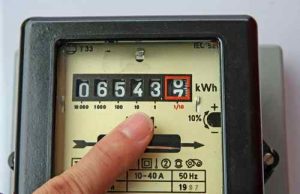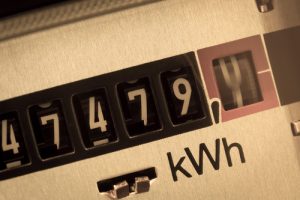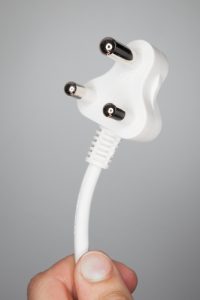Ways To Setup A Shock Proof House For Kids
- What is an electric shock?
- Why is baby proofing important?
- How to baby proof everything electrical?
- Baby Proofing Electrical Outlets
- How to stop your child from unplugging cords or plugging in an electrical device
- Must Have Solution for any HOME – The BEST Wholesome Protection from Electric Shock
- Adherence to Governmental norms (Indian Conditions)
- General Prevention – Child accident in home
- Must Do List – If in case an accident occurs
- Conclusion
- References
Electricity can be dangerous if not handled properly. This article presents valuable tips on how to set up a shock-proof house so that you can ensure your family’s safety.
- What is an electric shock?
- Why is baby proofing important?
- How to baby proof everything electrical?
- Baby Proofing Electrical Outlets
- How to stop your child from unplugging cords or plugging in an electrical device
- Must Have Solution for any HOME – The BEST Wholesome Protection from Electric Shock
- Adherence to Governmental norms (Indian Conditions)
- General Prevention – Child accident in home
- Must Do List – If in case an accident occurs
- Conclusion
- References
Two years back when on one fine morning, I was taking my daughter to school, we discovered once a beautiful large house had turned black (burnt due to electrocution). Out of utmost dismay and wonder, my daughter asked me – “Papa, what has happened?”, and I provided her few explanations to what could have happened and how it could have happened. But her inquisitiveness was not resolved, and every other day in the morning, when we passed by that house, my daughter’s questions kept pouring. Finally, she asked the most important question – “Papa, Will our house not ever turn black like this”?
This incident forced me to think how secured are we in our own houses and whether our houses are protected from electrical hazards. The electrical products form a major part of our everyday lives. One can discover them in every room of their home. Power outlets, extension leads, phone chargers, computer cables, induction plates, microwave and the list can go on and on. Unfortunately, we hardly pay heed to the design factors, keeping in mind the safety of a child. All it takes is a fraction of a second and the consequences could be fatal.
What is an electric shock?
Within the home, electricity is an alarming and most dangerous hazard, which moves at alarming speeds, completely soundless, and odorless. When the human body comes into direct contact with an electricity source, the current flows through it and depending on factors like the voltage of the current and the duration of contact, the electric shock can result anything from minor discomfort to disfiguring or disabling the person, and even leading to death.
Why is baby proofing important?
For every house, which has a baby, a toddler or a school-age child, our home should be a ‘Haven’ where the little ones can independently explore safely. After all exploring different activities like touching, holding, climbing develop your child’s body and mind. These must be inculcated and not restricted under the garb of safety. But simultaneously, as a worthy parent, one should be conscious of your child’s surroundings and what might be potentially dangerous.
Young children, particularly the toddlers, are the ones most prone to the lurking danger of electric shocks. Common situations wherein the shocks can occur are if the children bite on the electrical cables, poke their fingers inside a live electrical outlet or come in contact with water in electric current. All these instances can have serious repercussions and therefore it is a must that we should get account for the mentality, inquisitiveness of the child and then design the houses for shock proofing.
How to baby proof everything electrical?
No doubt, supervision is an excellent way to help prevent kids from getting injured. However, even the most attentive parent is unable to provide absolute safety to its child at all times. The best way to prevent electrical injuries is to cover all these outlets, and ensure that all wires are properly insulated. You should tuck wires away from your child’s reach and provide adult supervision wherever children are in an area with potential electrical hazards. A properly installed electrical system in a house can give you years of service. Just do away with the equipment and appliances with old or frayed cords and extension cords that look damaged.
Baby Proofing Electrical Outlets
Really, it is still to be deciphered what it is about an electrical outlet, but children adore them. Babies are somehow always fascinated by electrical outlets, probably for them, these electric outlets resemble starving faces, waiting to be fed with a finger OR it’s because they see elders plugging in an appliance and just want to emulate them and this urges them to poke fingers or jab metallic objects like keys is simply too irresistible.
The simplest and cheapest method of preventing the shocks through electrical outlets is to cap them. These are simple plastic covers which can be snug fit inside the electrical socket and thus prevent the direct exposure of the risk to the children. These plastic covers can be plugged directly into the electrical outlet and as the exposed front becomes entirely flat, thus making it hard for the child to grip.
The advantage of electrical outlet covers is not only they are cheap to purchase, easy to install, fits standard outlets but one can install them and forget the rest. During the installation process, one is even not required to touch the wires behind the outlet plate. Several parents choose to use these plastic caps in unused electrical outlets. They can also swear this is a rival of mischievous kids everywhere. Moreover, these clear plastic covers not only prevent your baby from pulling out the cords, but also the baby can’t poke anything inside. It’s that simple!
The only hitch with such electrical outlet covers is that one needs to remove them every time one needs to use the electrical outlet, and a single slip may result in the entire baby proofing effect getting lost. These days there are special baby proofing electrical outlets, with built in safety features of common brands like Anchor, Legrand, Havells, etc available in the market. Consumers also prefer them for their aesthetic appeal and safety features.
How to stop your child from unplugging cords or plugging in an electrical device
Another common way to avert the baby from getting an electric shock by their own curiosity is to keep appliances plugged in to extension cords at all times or one may move furniture in front of these outlets. Now, this suggestion may look perfect theoretically, but practically it may not always be possible to do.
A quick and cheap way to prevent the baby from getting an electric shock by electric cords, which are found scattered in the house is to use duct tape to stick these cords to the floor, however some applications may still require more than one layer of masking tape. In case the house is carpeted one can tape the cords to the baseboards. The masking tapes are considered a better choice, as in comparison to the duct tapes, they can peel off easily without leaving a residue. Shortening those cords that are just too long can be another viable DIY option.
So, loose cords on the ground that could trip up your child – Tape them down, exposed electrical outlets – Tape over them, even the light switches – Tape them on or off. So, sometimes the best solutions are the simplest!
Must Have Solution for any HOME – The BEST Wholesome Protection from Electric Shock
For any modern house for its wholesome shock protection, it must have must Residual Current Device (RCD) or Residual Current Circuit Breaker (RCCB) protection. This is a differential current sensing device. It contains a switch device which in case of a leakage fault, instantaneously trip off, and does not return through neutral.
Also, in case of a faulty or say wet wiring, means there are significant chances of the electric current passing through a person’s body in contact; the safety switch will disconnect the power within a fraction of a second. These circuit breakers provide vital protection arising due to accidental touch by human being or insulation failure, not possible by the normal miniature circuit breaker (MCB) or fuse alone. Importantly, these RCCB/RCD can also be used in a house where earthing is absent. For Indian market, Havells, ABB, Anchor and Legrand are some popular RCCB/RCD manufacturers.
Hiring a proper electrician rather than DIY approach – However, several dangers of electricity can be minimized with circuit breakers and insulation. Still, when problems arise, it requires a good professional to address them properly. Always consult your electrician for issues related to electricity – because he ensures a shock-free home and protects your family from electrical problems.
Also use certified products from trusted brands. Therefore, if you are looking for a proper protection for your house, just go to the market in any regular electrical store and ask for an essential protective device. A properly set electric system will ensure that there is no fatal injury caused in case of an accidental touch to live wires.
Adherence to Governmental norms (Indian Conditions)
Indian government norms stipulate that all the electrical fitting material used should follow ISI specifications and conform to BIS (Bureau of Indian Standards). This ensures that the chances of having electrical short circuits due to cheap or faulty wiring are minimized and the manufacturing defects are also at low levels.
Distribution system should be utilized to carry the wiring across the house and the mains should be conveniently located to rectify and faults easily. Also, ensure that for power wiring circuit the number of points in a circuit should be just 2, however for light circuits, the number of points in a circuit can be 10.
General Prevention – Child accident in home
- Make a first-aid kit and keep emergency instructions inside.
- Living and Bedroom Precautions – Make certain that the television sets are secured to the wall with an anti-tipping hardware, so that they can’t fall. Never place the TV set over the drawer’s top, toddlers may drag them out or endeavor to scale them, tipping everything over.
- Maintain wires out of reach of the children and also use covered power strips. The electrical sockets should also not be overloaded.
- In bedroom also, ensure that any nightlights aren’t touching fabric such as the bedspreads or curtains.
- Bathroom precautions – As water is an excellent electricity conductor, and the reason it can cause electric shocks or short circuits, the small appliances are an unusual hazard around bathtubs or pools.
- Set the thermostat at the desired level on your hot water heater.
- All the light fittings must be properly encased, with proper consideration to the fact that no electrical apparatus or outlets are within reach of a shower or the bath tub. Also, if a device mistakenly falls into water, never attempt to pick them without unplugging it.
- Kitchen Safety – Don’t allow the child using a walker in the kitchen. Also, do install a fire extinguisher in the kitchen and should be well trained to use it, as per the requirement.
- Proper fire safety plan – Formulate a fire escape plan with two ways out of the house; also have a designated meeting place once out of the house. One must also practice the fire escape plan, probably on a regular basis.
- It is also advisable to put an emergency ladder generally on upper floors of the house. In an event of an unseen circumstance such as fire, these small precautions are extremely useful and vital.
Must Do List – If in case an accident occurs
We all know that Precaution is better than cure, and sometimes even after practicing maximum precaution, an unfortunate incident, and an accident can still occur. Here are some immediate guidelines for such situations:
- In case of treating somebody with an electrical injury, the first and the foremost step is to immediately disconnect the power supply. This can be effectively done by pulling the plug or turning-off the main switch.
- If one can’t eliminate the electric source, attempt moving the injured child, but without using bare hands. For lifting a live wire, one must use insulators (that won’t conduct electricity) such as a dry stick, newspaper, thick clothing, or a dry, nonmetallic object. However, while helping the victim one must take adequate precautions to insulate oneself so that the current doesn’t pass through the injurer’s body to themselves.
- Once the current is forth, one must quickly ensure the child’s essential parameters such as breathing, pulsation, skin color (in case of burns), and alertness. In an event of breathlessness, or no heartbeat, emergency procedures such as Cardiopulmonary Resuscitation, commonly known as CPR is advisable. This effort will manually preserve intact brain function until further measures and will help in restoring spontaneous blood circulation. Also, one must move the injured child as modestly as possible because severe electric shock could result into a spinal fracture. Parents must also be alert to the possibility of bleeding from mouth burns hours or even days after the injury.
- Please note a proper medical treatment is essential – An injured child should be immediately (without failure) must be seen by a medical pediatrician as these electric shocks can lead into internal damages, which can’t be detected without a proper medical examination.
Conclusion
Do not forget that one damaged wiring can lead from minor outbreaks, damages, to causing loss to life and property. When it comes to protecting your children, knowledge about the precaution is of utmost importance; even just one tidbit of useful information can result in preventing an injury or even saving a life. Therefore, it is essential to check your childproofing efforts, get down on your hands and knees in every room of your home and to investigate things from a child’s perspective.
In this article, we have tried our level best to detail out all the aspects related to electrical shock proofing of your house, however we must admit, despite our best efforts – the solutions offered may not exhaustive, so if you notice anything risky or dangerous to your child then by all means, baby proof it. One should never forget that electricity is your friend only with complete protection in place. Don’t take electricity for granted and never apply any short cuts. That concludes my write-up on baby proofing anything and everything electrical. Do you have any further tips please do add?
References
- http://m.kidshealth.org/en/parents/safety-falls.html
- http://m.kidshealth.org/en/parents/safety-burns.html
- http://m.kidshealth.org/en/parents/safety-drowning.html
- https://www.bijlibachao.com/general-tips/why-is-rccb-necessary-for-your-house-rcd-electric-shock-residual-current-detectors-rccb-circuit-breaker.html
- http://parent.guide/how-to-baby-proof-everything-electrical/
- https://www.healthychildren.org/English/health-issues/injuries-emergencies/Pages/Electric-Shock.aspx
- http://www.parents.com/baby/safety/babyproofing/basic-babyproofing-made-simple/
- https://www.powerelectrical.ca/blog/hire-right-electrician-shock-proof-home/
- http://www.schneider-electric.co.in/documents/customers/electricians/protection-against-electrocution/Protection-against-electrocution.pdf






